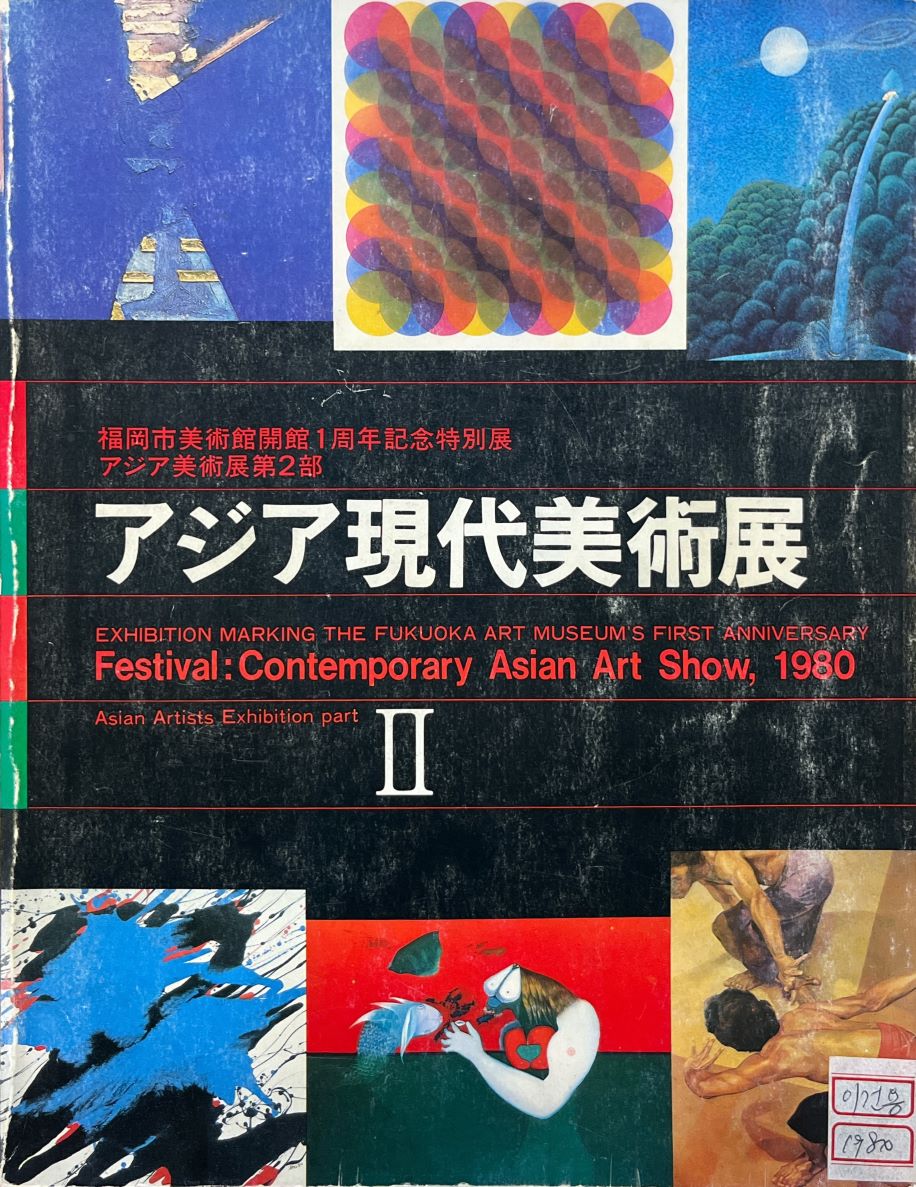
Exhibition Marking the Fukuoka Art Museum's First Anniversary Festival: Contemporary Asian Art Show, Catalog, 1980, MMCA Art Research Center Collection, Gift of Lee Kun-Yong
Asian Art Show
* Source: MMCA
Related
-
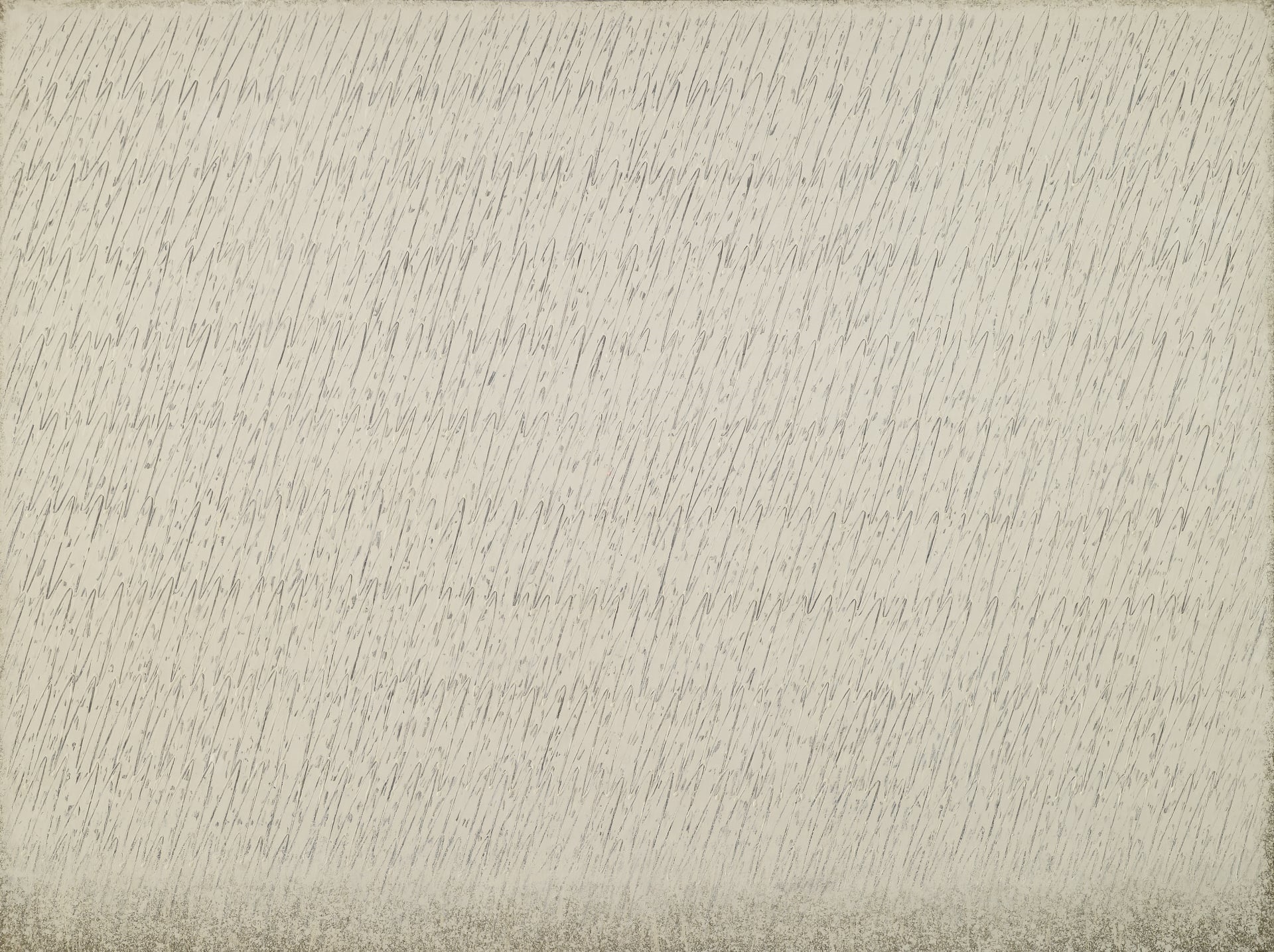
Park Seo-Bo
Park Seo-Bo(1931-2023, real name Park Jaehong) belongs to the first generation of artists who received art education in Korea after Korea’s liberation from Japan. He was a leading figure in Art Informel and Dansaekhwa. He was born in Yecheon, Gyeongsangbuk-do Province. He majored in Western painting in the College of Fine arts at Hongik University and graduated in 1955. He served as a professor at Hongik University and the board president of the Korean Fine Arts Association (Hanguk misul hyeophoe). Park made his debut as a painter in 1956 through the Four Artists Exhibition that declared resistance to the National Art Exhibition and the established generation. After presenting abstract expressionist work completely different from the established art at the third Hyundae Fine Artists Association exhibition in 1958, he led the Art Informel movement until the mid-1960s. In the 1970s, he headed large-scale special exhibitions, including Independants, the Seoul Contemporary Art Festival, Ecole de Séoul, and Korea: Facet of Contemporary Art. He also played a key role in establishing “Dansaekhwa” as a style of Korean painting in the 1970s. His oeuvre can be divided into three periods. The first period (late 1950s–mid 1960s) is referred to as the Art Informel period, during which Park depicted the post-war situation with distorted and deconstructed human forms, dark colors, and rough matière, particularly in the Primordials series. During the second period (late 1960s–early 1970s), he focused on the modernization of tradition, presenting optical and geometric abstraction with five colors representing the five cardinal directions as the dominant compositional element under the thesis of hereditarus. During the third period (1970s–2023), which is known as the period of monochrome painting, he presented the Ecriture series, in which performance was fundamental to his creation. The Ecriture series can be divided into two periods: before and after year 1982. In the former period, Park repeatedly applied milky oil paint to a canvas and before it dried, drew lines with a pencil or a tool with a sharp tip, thus leaving traces of this act on the canvas. In the latter period, he used water-based paints instead of oil-based paints in an effort to more directly capture his emotions with bright hues inspired by the colors of nature. Until his death, he sought to build the identity of Korean art through various methodologies within a single thesis of ecriture and elevated Dansaekhwa to an international level.
-
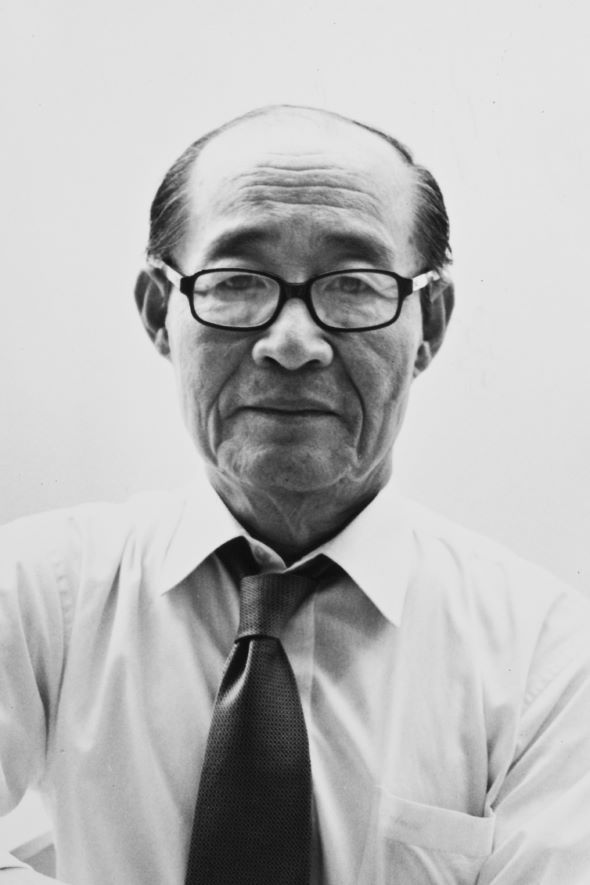
Yu Jun-sang
Yu Jun-sang (1932-2018) was a founding member of the Korean Art Critics Association [Hanguk misul pyeongnonga hyeophoe] along with Lee Yil and Oh Kwang-su. He has worked in various fields as a curator, educator, and art museum director. After graduating from the College of Commerce at Seoul National University in 1954, Yu moved to France in 1956 and pursued a Ph.D. in business administration at the University of Paris (Université de Paris) before dropping out. He studied painting at the Académie de la Grande Chaumière and audited the history of Western modern and contemporary art at the Liberal Arts Department of the University of Paris. After returning to Korea, he taught art theory courses at Hongik University, Seorabeol University of Arts, and Ewha Womans University. As an art critic, he served as president of the Korean Art Critics Association from 1972 to 1982. Yu participated in the selection of artists representing Korea for the exhibition of Contemporary Korean Painting held at The National Museum of Modern Art, Tokyo in 1968, and Korean Contemporary Art: 1957–1972 held at the Myeong-dong Gallery in 1973. He was head of the curatorial department at the National Museum of Contemporary Art, Korea (now MMCA) from 1986 to 1992 and as director of the Seoul Museum of Art from 1999 to 2002. He also laid the foundation for Korean art criticism by assuming charge of editing the magazines Hyeondae Misul of Myeong-dong Gallery in 1974 and Sun misul of Sun Gallery from 1979 through 1983. His publications can be divided into those that attempt a conceptual or aesthetic approach and those that discuss the works of other artists. The former include Korean Contemporary Art 12: Stylization of Korean Sentiments (Hanguk Ilbo newspaper company, 1977, 82–108) and “Prospects and Possibilities for Computer Art: A Focus on Patterns of Perception and Artistry” in Beyond Modernism (Yesul jisik, 1989, 298–315). Among the artists that Yu addressed with interest were Rhee Seundja, Kwon Jinkyu, Quac Insik, Moon Shin, Nam Kwan, Kwon Okyon, Kim Whanki, Chang Dookun, Lee Seduk, Han Mook, Moon Hakjin, Park Hangsup, Choi Youngrim, and Kim Sechoong. Yu was particularly interested in the generation of artists who had received art training before Korea’s liberation from Japan as well as those who had lived in France.
-
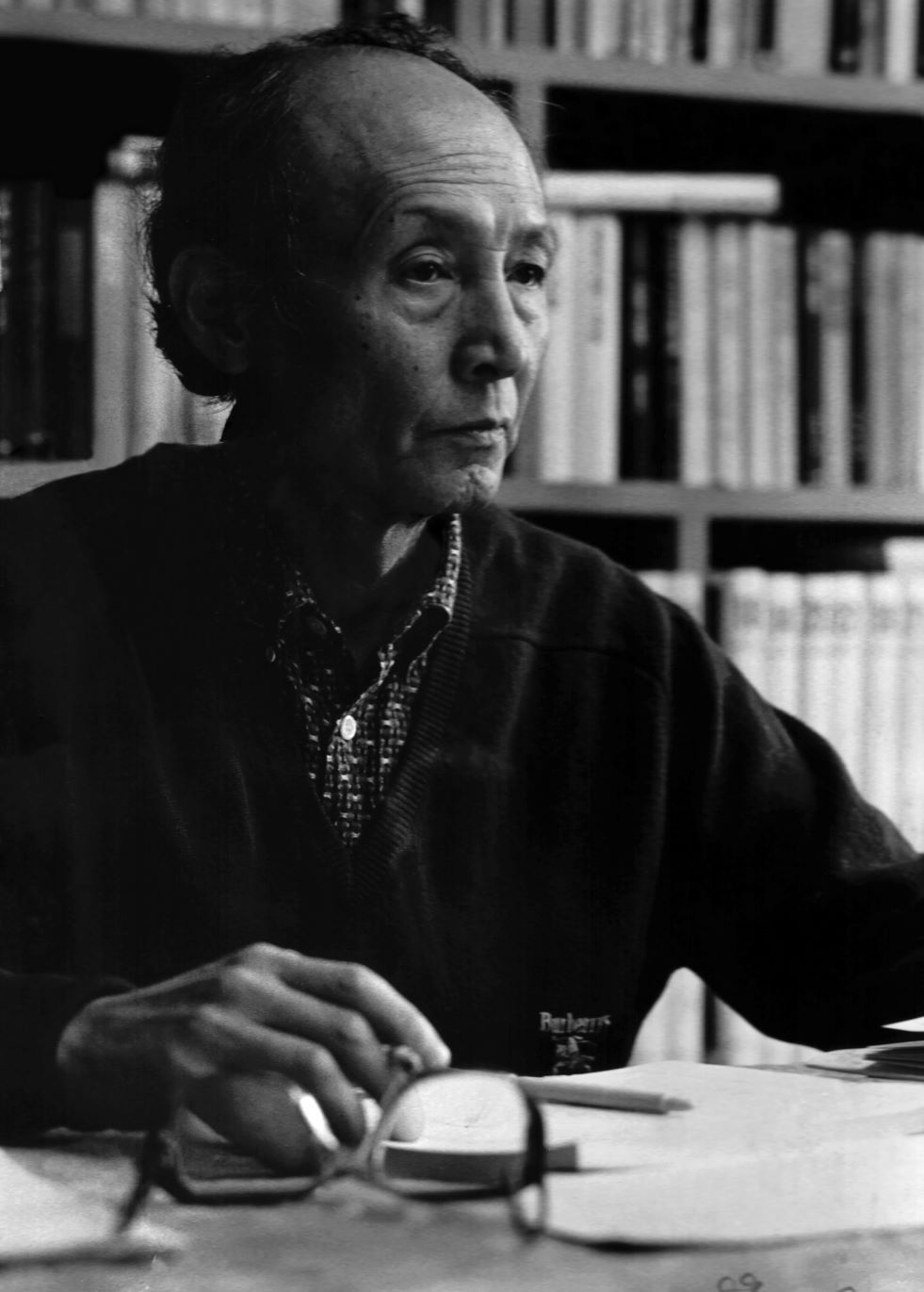
Lee Yil
Lee Yil(1932-1997) was a first-generation critic whose art criticism was based on art theories and greatly impacted the formation of Korean modernism. He was born in Gangseo, Pyeongannam-do Province and his real name is Lee Jinsik. While attending Pyongyang High School, Lee defected to South Korea and went to Gyeongbok High School in Seoul. After graduation, he entered the French Literature Department at Seoul National University but dropped out and moved to Paris. In 1961, he studied archaeology and art history at Sorbonne University. There, he worked as a Paris correspondent for the Chosun Ilbo newspaper. In 1964, he translated and published L’aventure de l’art abstrait (The Adventure of Abstract Art) by Michel Ragon. Returning to Korea in 1965, Lee began practicing art criticism in earnest. In 1966, he joined Hongik University as a professor of art theory, and he held the position for thirty years until his retirement in 1997. He wrote A Trajectory of Contemporary Art that introduced contemporary art of the West in 1974. Among his translated works are Naissance d’un Art Nouveau (Birth of Art Nouveau) (1974) by Michel Ragon, The History of World Painting (1974), and History of Art by H.W. Janson (1984). From the 1980s, he published books on art criticism, including Korean Art: The Face of Today (1982) and Reduction and Expansion of Contemporary Art (1991). After his death, the collections of his posthumous manuscripts, Lee Yil: Art Criticism Journal (1998) and The Critic Lee Yil Anthology in two volumes (2013), were published. Lee Yil’s art criticism activities can be divided largely into two periods. The former period spans from the time he returned from France to the early 1970s. During this period, Lee was interested in anti-art such as Dadaism and Nouveau Réalisme (New Realism). He inspired the formation of the Union Exhibition of Korean Young Artists that was brought together in solidarity by the generation who experienced the April 19 Revolution. Serving as a founding member and theorist of the Korean Avant Garde Association (referred to as AG) established in 1969, he developed criticism that laid the foundation for the formation of avant-garde art that emphasized experimentation. Around 1971 and 1972, he redirected his attention to art reflecting Korean culture and the spirit of Koreans rather than avant-garde focused on resistance. In the latter period, he stressed a “return to the primordial.” With his distinctive critical concepts, such as “reduction and expansion” and “pan-naturalism,” he actively supported the Korean Minimalism school of painters, especially Dansaekhwa artists. Lee’s critical perspective became a cornerstone in the narrative of Korean contemporary art history in the 1970s.
Find More
-
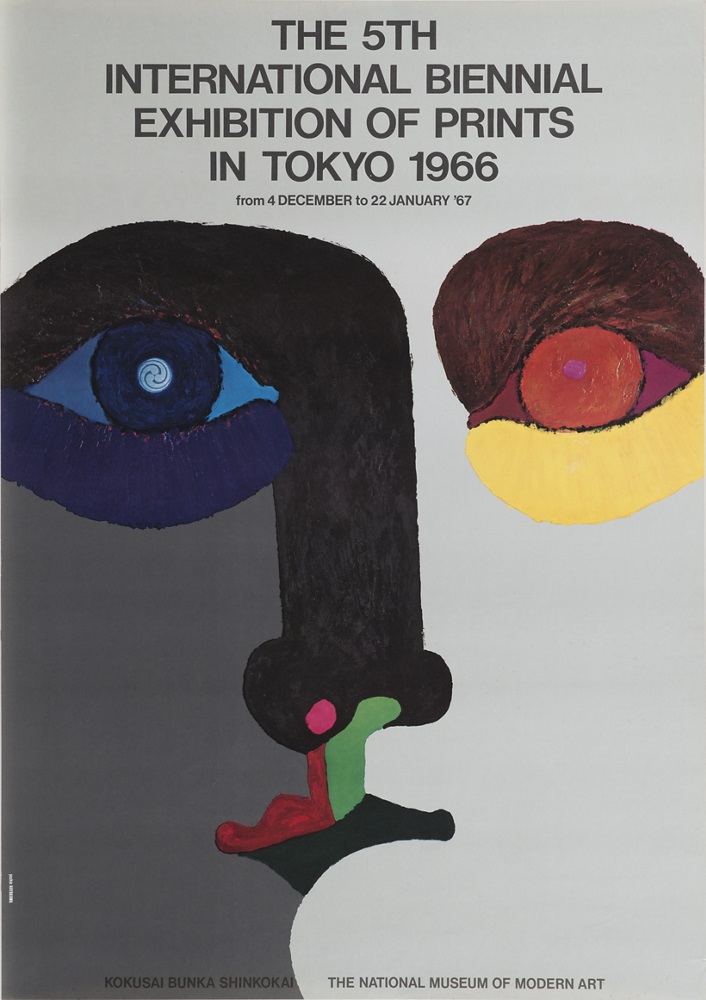
International Biennial Exhibition of Prints in Tokyo
The International Biennial Exhibition of Prints in Tokyo was an international print exhibition held in Japan eleven times from 1957 through 1979. Initially, it was co-hosted by The National Museum of Modern Art, Tokyo and The Yomiuri Shimbun newspaper company. In the fifth edition, the International Cultural Promotion Association (Kokusai bunka shinkōkai) replaced The Yomiuri Shimbun, strengthening the nature of cultural exchange. Over twenty-two years, a total of 1,317 artists (1,098 foreign artists and 219 Japanese artists) participated in the International Biennial Exhibition of Prints in Tokyo, with approximately 3,000 works submitted. The International Biennial Exhibition of Prints in Tokyo is one of the international exhibitions in which a large number of Korean artists took part. This is partly owing to geographical proximity, but active exchanges with Japanese art circles in the 1970s also encouraged their participation. Korean artists consistently participated from the fifth edition to the eleventh. Yoo Kangyul, Kim Chonghak, and Youn Myeungro joined the fifth edition (1966); Bae Yoong, Suh Seungwon, and Ahn Dongguk, the sixth edition (1968); Kim Tchahsup, Ha Chonghyun, and Lee Ufan, the seventh edition (1970); Kim Sangyu, Kim Tschang-yeul, and Kwak Duckjun, the eighth edition (1972); Lee Ufan, Kim Kulim, and Chung Chanseung, the ninth edition (1974); Lee Kangso, the tenth edition (1976); and Suh Seungwon, Shim Moonseup, Kwak Duckjun, Chin Ohcsun, and Lee Ufan, the eleventh (1979). Among these participating artists, Kim Chonghak received an honorable mention in the fifth, and Kwak Duckjun won the Minister of Education Award in the eighth. In the eleventh, Chin Ohcsun won the Minister of Foreign Affairs Award and Lee Ufan won the Kyoto National Modern Art Award. In the eighth, the art critic Lee Il participated as an international judge. The International Biennial Exhibition of Prints in Tokyo exerted a considerable influence upon the development of Japanese contemporary prints and played a role in anchoring prints in the postmodern discourse of “de-genre” and “de-media” in conjunction with contemporary art. Witnessing the interest in prints not just from Japanese art circles but also from the international art community through the exhibitions, Korean artists became more interested than ever in prints, which emerged as a major medium of expression in contemporary art. Since the 1970s, there has been a significant increase in the number of artists working in printmaking.
-
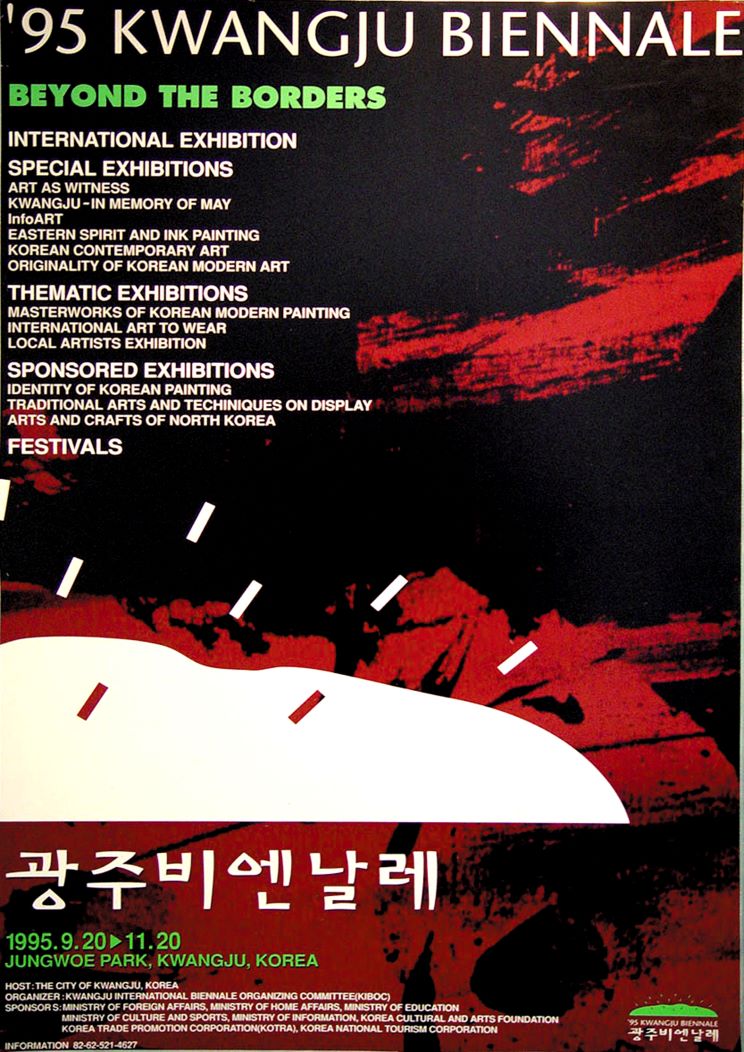
Gwangju Biennale
An international contemporary art exhibition held every two years. The biennale is the first of its kind in Asia. The theme of the first Gwangju Biennale in 1995 was Beyond the Borders, and the theme of the most recent twelveth Gwangju Biennale was Imagined Borders. Each biennale hosts exhibitions and events based on themes that reflect the global diversity of socio-cultural realities and progressive values around the world.






